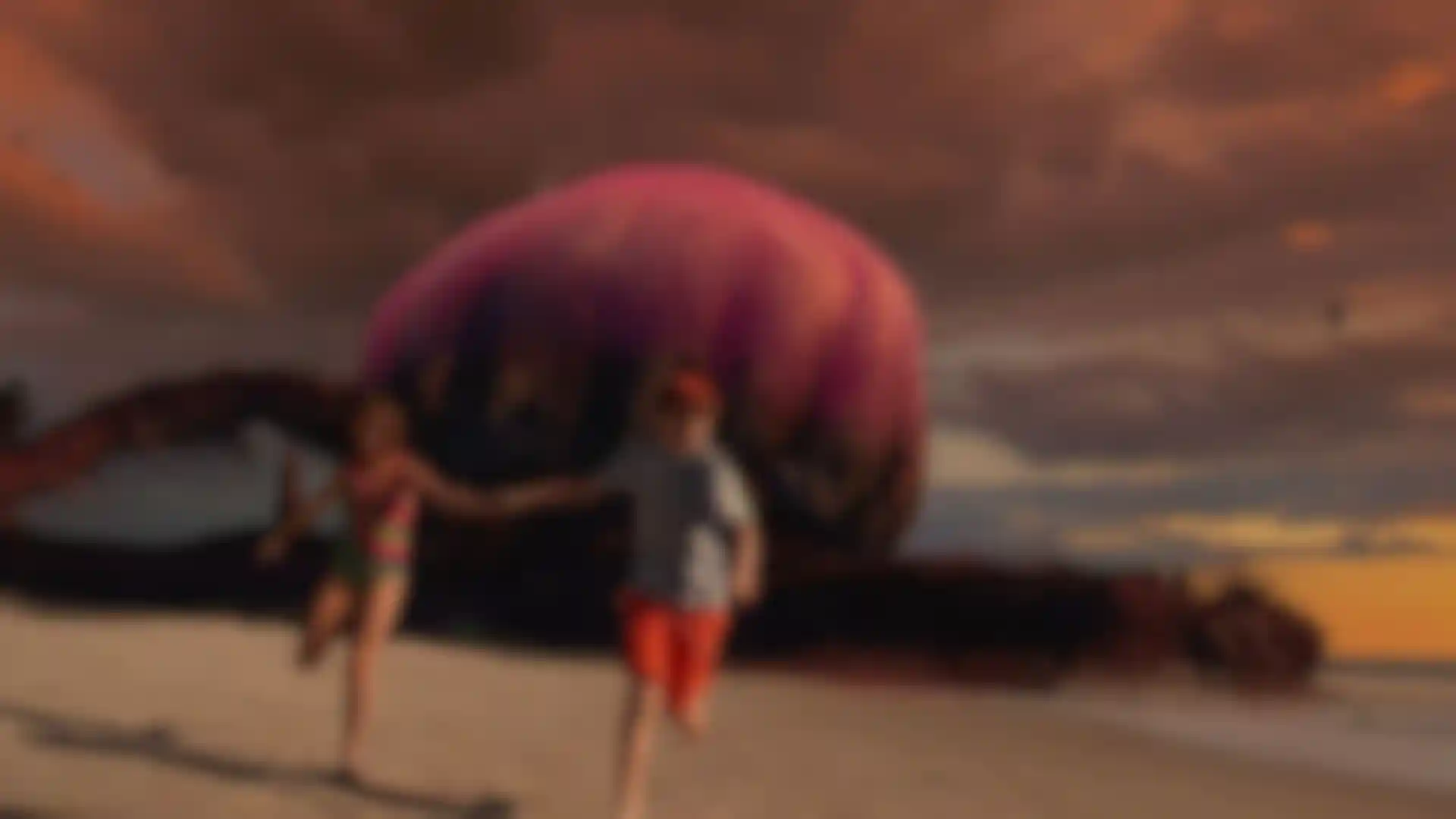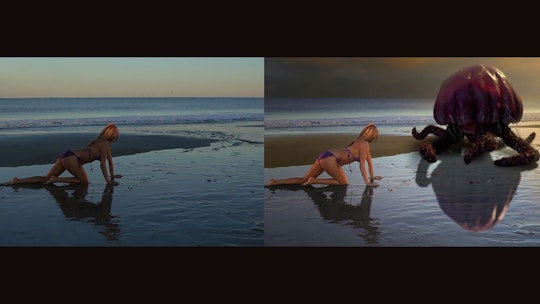
Jellyfish From Hell Mutant jellyfish terrorize beachgoers in Patrick Longstreth's sci-fi short, Hellyfish.
On February 5, 1958, a B-47 bomber dropped a 7,000-pound nuclear bomb into the waters off Tybee Island, Georgia after an F-86 fighter jet accidentally crashed into it while on an Air Force training mission. That bomb, which contains a much-debated quantity of radioactive material, has never been found and the Air Force wishes that people would stop looking for it. Left undisturbed, they say, the bomb is harmless. If it is disturbed, well, things could get ugly.
And that's exactly what happens in Patrick Longstreth's short sci-fi horror spoof, Hellyfish, in which the lost bomb is leaking radioactive material and mutant, bloodthirsty jellyfish terrorize and devour beachgoers. "I saw a documentary about the lost bomb and thought it was so fascinating that I considered making my own documentary," recalls Longstreth, who used Maxon's Cinema 4D to create his film. "But then I thought about how there really was an actual jellyfish problem in Savannah and how much I love beach monster and horror movies, and the idea just came to me."
Hellyfish is Longstreth's first independent film. After earning a business degree, he quickly changed directions and worked for NBC Network News as a motion graphics artist for three years. Next, he got his graduate degree in visual effects from the Savannah College of Art and Design (SCAD) and moved to Los Angeles where he has worked for well-known production studios, Psyop and Imaginary Forces, while also freelancing as a director and VFX supervisor for commercials, corporate videos and independent films.
Longstreth and co-director Robert McLean, who brought his experience working with actors on film sets to the project, shot Hellyfish in Savannah, Georgia. The decision cost them must less than they would have had to spend on the same shoot in Los Angeles. In addition to being able to use some of SCAD's equipment for free, they were also able to readily find local actors and friends to fill over 20 different roles in the film. Rehearsals were done in Longstreth's backyard, and the shoot spanned 16 days over the course of six months.

Animating the Creatures
Longstreth modeled the killer jellyfish in Cinema 4D and additional sculpting was done in Zbrush. To create a fully digital environment with 3D camera movement, photos and video of sky, sand and ocean were projected onto geometry in Cinema 4D. But when it came time to create and rig a full-run cycle for a creature with five tentacles, fur, long stringy hairs and soft body dynamics, the team brought on experienced character animator, Pryce Duncalf.
For the final shot, in which the giant Hellyfish destroys the Tybee Pier, they created an exact model of the pier in Cinema 4D and then projected an image of the actual pier onto the 3D model. Because the interaction with the character proved to be too intricate for a full dynamics simulation, each individual piece of the pier was keyframed. "The Cinema 4D deformers were essential to this animation process," Longstreth explains.
For dramatic effect, some shots were slowed down to 33 percent. This meant it was especially important to eliminate any imperfections in the animation because they would be easier to spot in slow motion.
Creating Realistic Water Scenes
The opening nighttime scene was shot on a green screen to allow for more control of the lighting camera movement. Shots were taken from every angle, including wrap-around dolly shots that were tracked with Pixel Farm's PFTrack. The night sky was a 360-degree matte painting augmented by moving clouds, the shoreline on the horizon and a blinking lighthouse.
Creating realistic-looking water was one of the biggest challenges, says Longstreth, who laughs when, in all seriousness, he says "we used every trick in the book." For shots that required CG water, Cinema 4D and RealFlow were combined to get the best results.
To create the feeling of being underwater, floating CG algae, dirt, and bubbles were added with the Trapcode Particular After Effect plug-in, which allowed full control over the density, size and animation. Video Copilot's Optical Flares and Action Essentials were used to help tie shots together. All told, over 20 artists ended up helping with the post-production.
Funny Scary
When the film was finished, they had an advance screening in Savannah for cast, crew and friends. "Even the kids were cracking up laughing and that was really rewarding," Longstreth recalls, "because if they get the humor, that's exactly what we were going for. We didn't want something gruesome. We wanted it to be Halloween material in the category of Gremlins or Ghostbusters."






